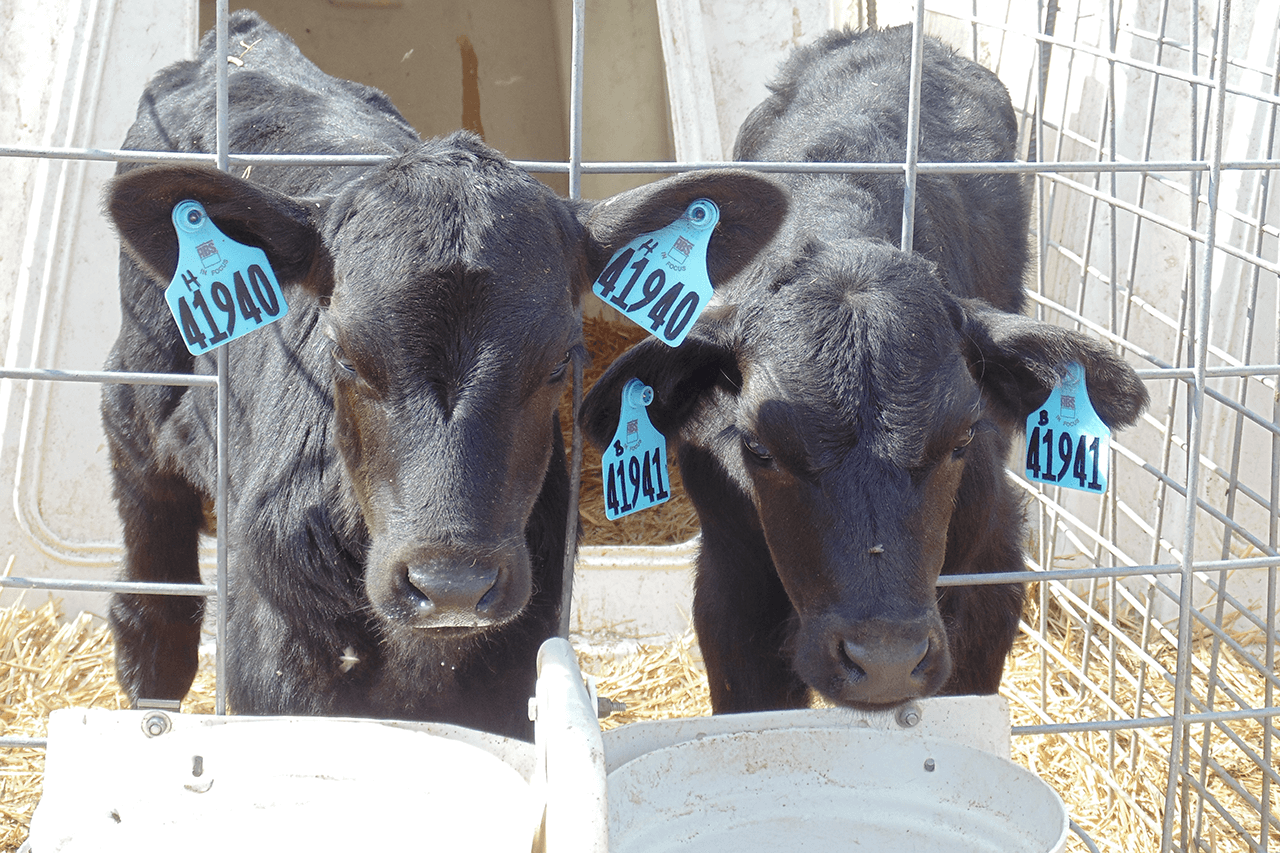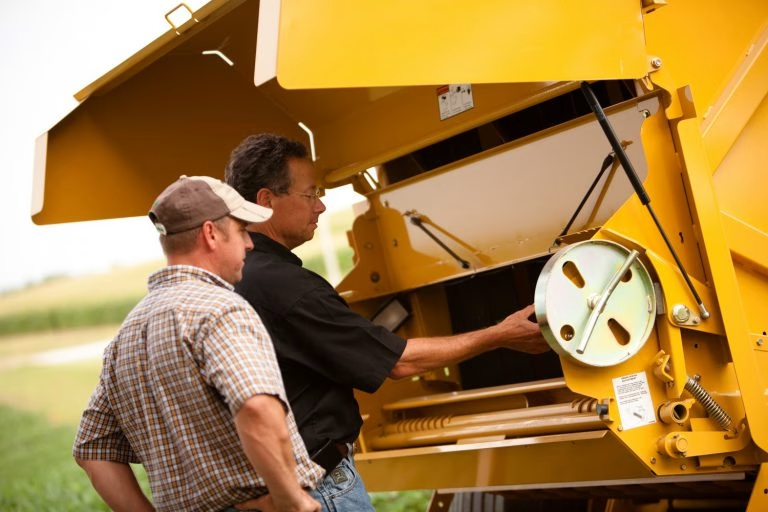Boost your dairy profits with expert beef crossbreeding tips. Learn to select the right genetics for lasting success. Want to increase your earnings?
Summary: If you’re a dairy producer facing rising input costs and unpredictable markets, it’s time to explore crossbreeding to thrive in today’s beef market. Imagine day-old calves becoming a profitable venture worth over $1,000 each. The secret? Understanding Expected Progeny Differences (EPDs) and focusing on traits like fertility, calving ease, and growth ensures a consistent beef chain supply. Recognizing buyer preferences allows you to tailor genetic selections, sustaining a profitable and reliable business. Selecting outstanding qualities improves farm output and fosters consumer trust in quality and consistency.
- Crossbreeding can turn day-old calves into a profitable venture, with prices reaching over $1,000 each.
- Understanding Expected Progeny Differences (EPDs) is critical to successful breeding and market performance.
- Focus on fertility, calving ease, and growth traits to ensure a consistent and high-quality supply to the beef market.
- Tailor genetic selections based on buyer preferences to maintain a reliable and profitable business.
- Improving genetic quality not only boosts farm output but also builds consumer trust in the consistency and quality of your products.

Despite the challenges of drought and rising input prices in the cattle sector, there is a potential for increased profitability that dairy farmers can harness. Have you considered how beef crossbreeding may be the key to unlocking this potential for your dairy farm? You can utilize your dairy calves to meet the beef supply shortage by transforming these difficulties into opportunities. With day-old meat from dairy calves costing more than $1,000 in certain areas, this presents a significant opportunity to diversify and succeed. “The favorable market for beef-dairy crossbred calves represents an untapped goldmine for dairy producers willing to make strategic breeding choices.” This article will provide professional advice on maximizing long-term success via smart crossbreeding. Are you ready to raise your farm’s profitability to another level? Learn how to incorporate cattle genetics into your dairy business easily.
Understanding the Market: Why Beef Crossbreeding is Profitable
Have you observed any changes in the beef market recently? Drought and increased input prices have placed a strain on local beef farmers, resulting in severe beef calf scarcity. This presents a significant opportunity for dairy producers to step in and fill the vacuum by providing crossbred cattle, which are in great demand in the current market. Your role as a dairy farmer is crucial in meeting this beef supply shortage. Due to solid demand, day-old meat from dairy calves may earn farmers more than $1,000 in certain areas.
What does this imply for you, a dairy farmer? With careful genetic selection, you may turn this market shortfall into a profitable cash stream. By being proactive in your genetic planning, you’ll be helping to fulfill the massive demand for beef calves while also preparing your enterprise for long-term prosperity. This forward-thinking approach to genetic planning now may result in significant financial benefits tomorrow.
Maintaining these advantageous markets in the long run requires careful genetic selection. Dairy farmers may use the same selectivity to ensure a consistent and lucrative supply chain when producing dairy replacements for crossbred beef calves. The appropriate genetics let you connect with buyers who value reliable and predictable calves, preparing you for market volatility and ensuring your long-term profit potential.
Your Secret Weapon for Smart Breeding: Expected Progeny Differences (EPDs)
One of the most effective techniques is Expected Progeny Differences (EPDs). These assessments indicate your cattle’s genetic potential, allowing you to make informed breeding selections. EPDs may help you choose sires with the finest characteristics for your dairy-beef crossbreeding program.
Key Traits to Consider
- Fertility
Fertility is essential because it guarantees that your cows get pregnant and remain pregnant, resulting in more calves and profit. High fertility sires will help your breeding program stay efficient and productive. - Calving Ease
Calving ease refers to ensuring that deliveries go quickly and without problems. Difficult calvings may be expensive, lowering the milk supply and perhaps resulting in the loss of the calf or cow. Using sires with favorable Calving Ease EPDs may help reduce these risks, making your business more efficient and lucrative. - Growth
Growth features, such as weaning and yearling weights, indicate how quickly and effectively your calves will develop. Choosing sires with high-growth EPDs guarantees that your calves achieve market weight faster, resulting in more pounds of beef and more profitability. Consistent growth leads to recurring business from customers who trust your calves’ performance. - Terminal Traits
Terminal qualities are primarily focused on the end product’s quality and yield. Carcass Weight and Marbling are two traits that influence how much you are rewarded. Higher carcass weights and marbling result in more money per animal, making them an essential aspect of any breeding program.
Concentrating on these critical characteristics through the lens of EPDs may position you for long-term success in the beef-on-dairy industry. It’s all about making educated decisions that benefit your herd and bottom line.
Knowing Your Buyer: The Key to Successful Crossbreeding
Understanding your buyer’s wants is critical to the success of your beef-on-dairy crossbreeding operation. Each consumer has unique tastes, and recognizing them allows you to adjust your genetic selection approach to fit their demands. This technique assures compliance with industry standards and benchmarks for a market-leading product.
Let’s explore a few scenarios to see how different traits can be prioritized and how to adjust genetic selection to meet buyer demands:
- Scenario 1: Selling Day-Old Calves
For dairies that sell day-old calves, calving ease and marbling are essential. Easier calving reduces stress for the dam and increases the calf’s survival rate. Marbling ensures that the calf grows into a beef animal with excellent carcass quality, resulting in higher pricing. - Scenario 2: Local Sale Barn Marketing
If you are a small dairy advertising via a local sale barn, concentrating on qualities like fertility and minimizing undersized calf sizes might be helpful. Fertility provides constant output, and a respectable Birth Weight avoids problems at the sale barn, where calf values often differ by weight. - Scenario 3: Raising Calves to 500 lbs
Growth and terminal qualities are critical for dairies growing crossbred calves to 500 pounds and selling them straight to feedlots. Higher Weaning Weight and RADG values enable efficient development, while Carcass Weight coincides with feedlot preferences for optimal grid efficiency.
Understanding and supporting your customers’ demands via thorough genetic selection fosters meaningful partnerships while positioning your beef-on-dairy business for long-term success.
The Bottom Line
Strategic crossbreeding is critical for sustaining a lucrative and sustainable dairy company. Methods such as Expected Progeny Differences (EPDs) can help you fulfill your farm’s fertility, calving ease, and growth requirements while also responding to the expectations of the beef supply chain.
Remember that selecting these outstanding qualities improves your farm’s output and fosters connections with customers who respect reliability and quality. Whether selling day-old calves or growing them to greater weights, connecting your breeding plan with market expectations positions your dairy beef for long-term success.
Are you ready to increase your dairy farm income via beef crossbreeding?
Are you eager to discover the benefits of integrating beef genetics into your dairy herd? “The Ultimate Dairy Breeders Guide to Beef on Dairy Integration” is your key to enhancing productivity and profitability. This guide is explicitly designed for progressive dairy breeders, from choosing the best beef breeds for dairy integration to advanced genetic selection tips. Get practical management practices to elevate your breeding program. Understand the use of proven beef sires, from selection to offspring performance. Gain actionable insights through expert advice and real-world case studies. Learn about marketing, financial planning, and market assessment to maximize profitability. Dive into the world of beef-on-dairy integration. Leverage the latest genetic tools and technologies to enhance your livestock quality. By the end of this guide, you’ll make informed decisions, boost farm efficiency, and effectively diversify your business. Embark on this journey with us and unlock the full potential of your dairy herd with beef-on-dairy integration. Get Started!














